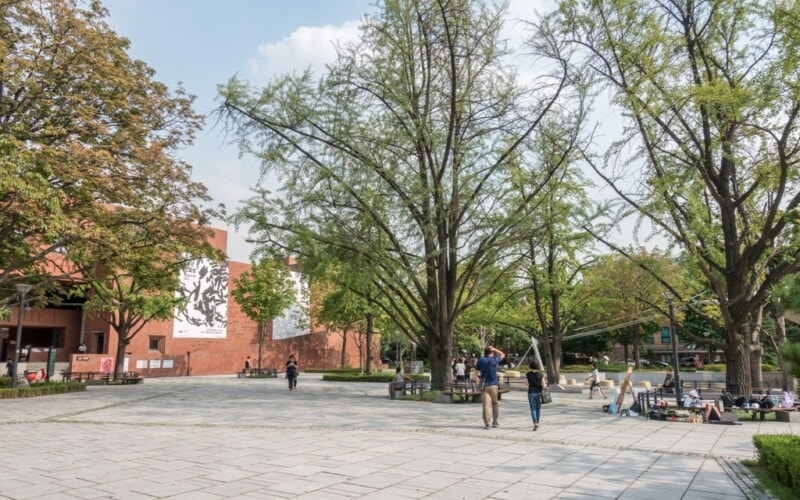
Marronnier Park is a park located in the Daehangno district of Seoul named after the large marronnier (chestnut tree) growing in the center of the park. The Marronnier tree originates from Italy and France in the Mediterranean where in the spring, red and white flowers can be seen blooming.
The district of Daehangno, also known as College Street, is a popular place for cultural events, exhibitions, and musical performances. Many of these events occur at Marronnier Park, especially on the warm afternoons in the summer and on weekends when you can find the area most alive and buzzing with activity.
The park, located just outside of exit 2 of Hyehwa Station, is also one of the venues for the Seoul Performing Arts Festival.
Seoul National University was once located here. In the 1970s, the university was relocated and the area was redeveloped. A miniature replica of the university can be found near the center of the park. The replica gives visitors an idea of what the area looked like before the university was moved.
Many small cafes and theaters moved creating a cultural zone popular with youths. Many of these youths can be found at Marronnier Park relaxing, studying, playing sports, practicing on their guitar, or hanging out and talking with friends.
Though small, Marronnier Park is a great place to spend the evening before heading over to the theaters, restaurants, and nightlife of Daehangno. Just take a seat at one of the many benches and enjoy the people watching, performers, and the natural beauty and scenery of the park.
Almost all of the amateur performers who set up here every weekend have aspirations to become famous one day. The road to stardom starts at Marronnier Park, or so they hope.
Many of these performers include musicians, dancers, comedians, magicians, and even mimes who often set up and perform on the open air stage. If you are looking for a spot to catch a unique and free outdoor performance, then this is the spot.
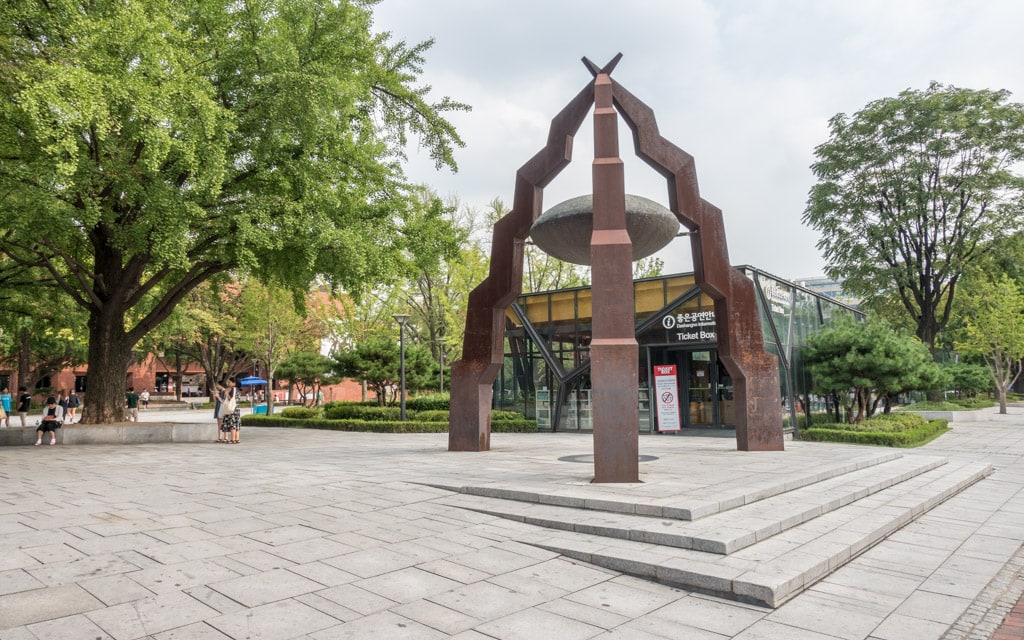
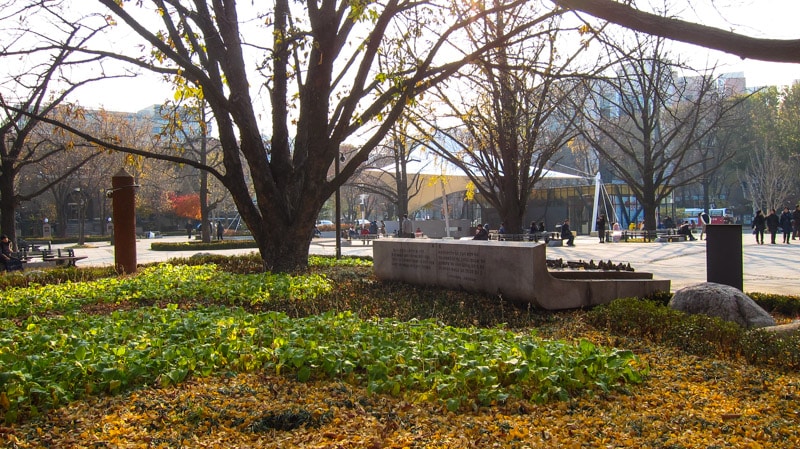
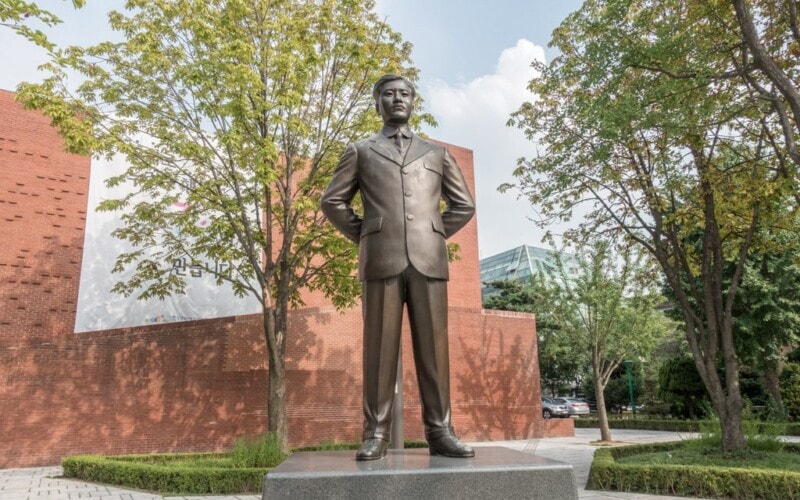
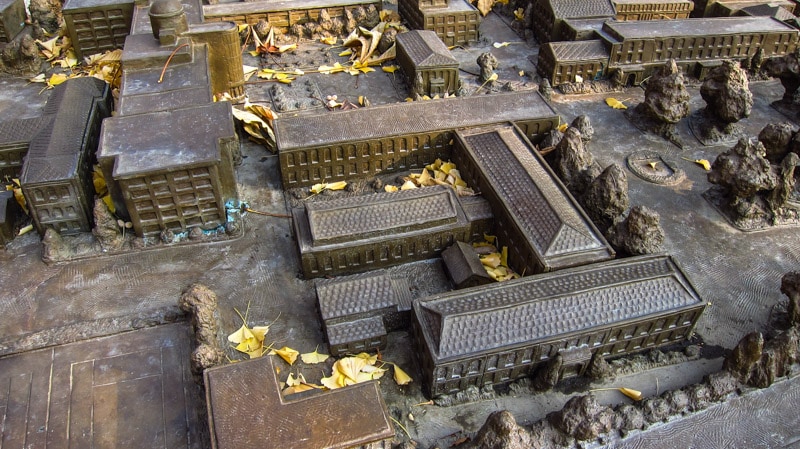
Marronnier Park Information
Hours
24 hours
Admission
Free
How to Get Here
Take Subway Line 4 to Hyehwa Station (Exit 2).
Marronnier Park Video
Map
Additional Resources
Viator by TripAdvisor
Viator is a popular online platform that helps travelers book tours, activities, and unique experiences worldwide, including in Seoul. It connects users with a wide selection of options – from sightseeing tours to cultural events and outdoor adventures – all offered by local providers.
Klook
Klook offers discounted tickets and reservations for various attractions and services in Seoul, from theme parks and museums to tours and transportation options.
Rakuten
Save money while exploring Seoul with Rakuten's cashback program. Book your hotels or other services through Rakuten and enjoy cashback rewards and exclusive deals.
If you sign up using the link below, you could earn $30 cashback on your first purchase over $30.
Book Recommendations
For an immersive guide to Seoul, many travelers choose to bring a book along. Fodor's Seoul, for example, offers detailed recommendations on sights, restaurants, maps, and travel tips.
Nearby Sights
Lock Museum
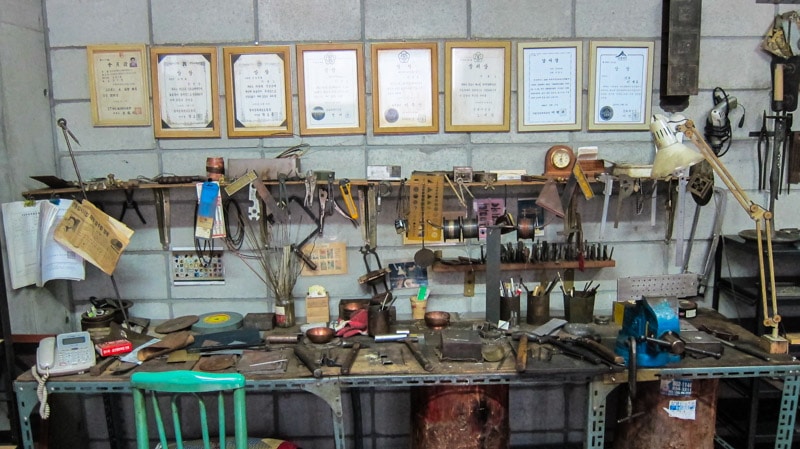
The Lock Museum displays antique locks, keys, and furniture from Korea and all over the world and conserves this disappearing art for future generations. The museum, which features over 4,000 different types of locks, is located in the district of Daehangno (College Street) near Daehak-ro southeast of Hyehwa Station. The museum was opened in a beautiful modern building in November 2003 by Choi Hong-gyu.
Daehangno (College Street)
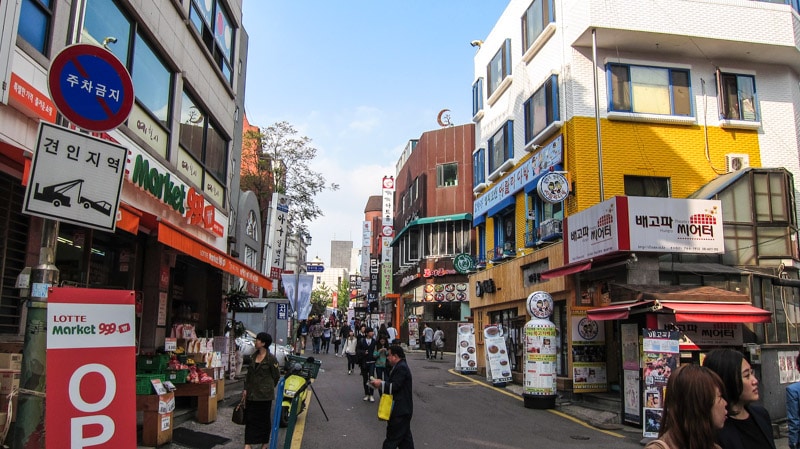
Daehangno, also known as College or University Street, is a popular youth culture area that is lined with small theaters. Seoul National University was once located here. This lively and youthful area is a great place to catch a show, have a nice dinner, or just wander around. Prior to 1985, this area was known as Sunggyobang, meaning "high respect for teaching."
Daehan Hospital
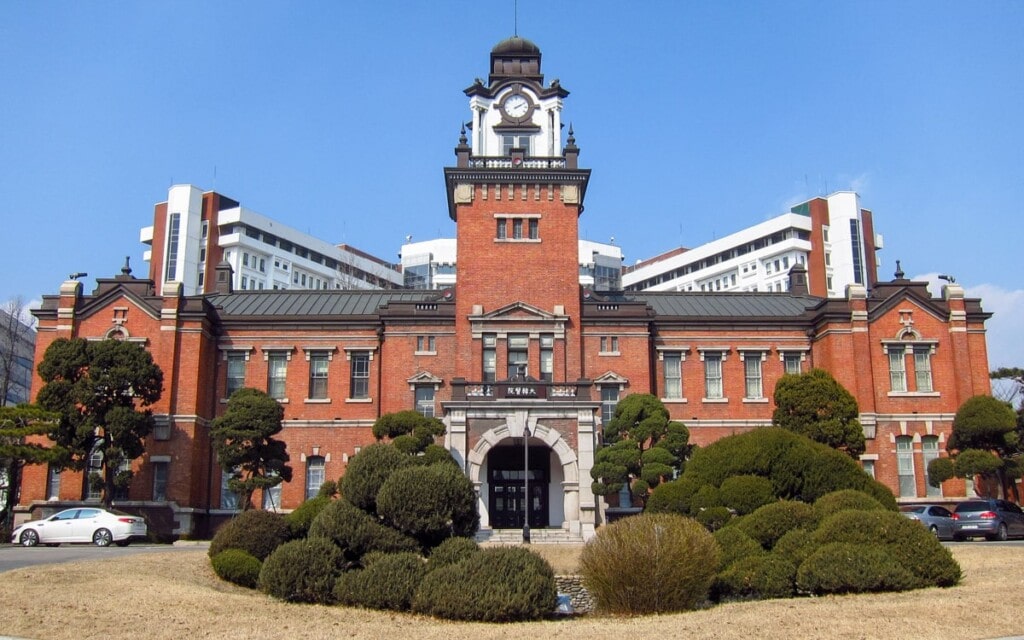
This red brick building was once the main building of Daehan Hospital, the leading medical and hygiene institution during the Great Han Empire (1897-1910). The building is now located on the grounds of the Seoul National University Hospital. In August 1906, construction on Daehan Hospital began on the site of Hamchunwon, the former outer garden of Changgyeonggung Palace.
Naksan Park
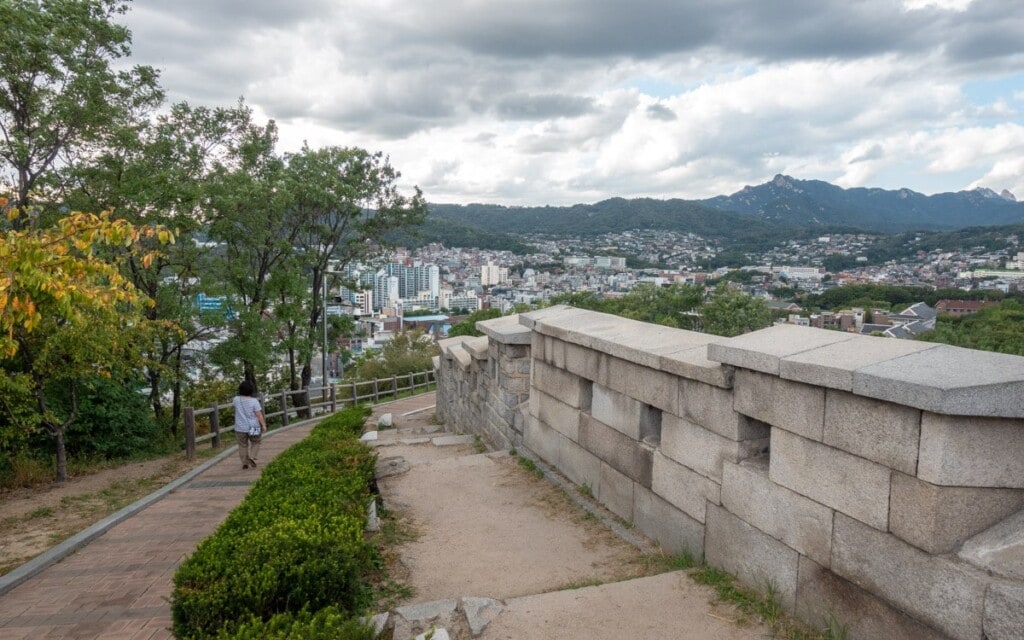
Stunning views of Seoul can be seen from Naksan Park, set high above Daehangno on Mt. Naksan. A portion of the old fortress wall runs through the park. Naksan Park is sometimes called Nakta Park. The name of the park is a reference to its hump like appearance as "nakta" is the Korean word for camel.
National Children's Science Center
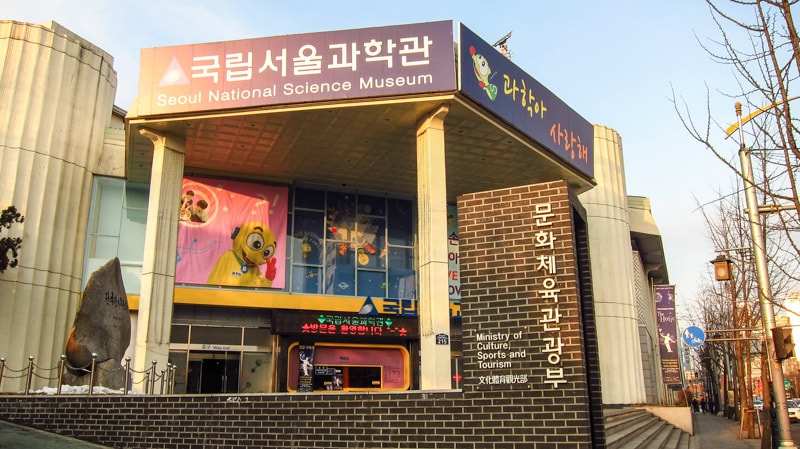
Just north of the main gate of Changgyeonggung Palace is National Children's Science Center which features interesting exhibits for both children and adults. This museum was formerly known as the Seoul National Science Museum. The museum which is often missed by most tourists features three floors of exciting and interactive exhibitions along with a museum shop and lounge where parents and visitors can relax and rest.
Daehangno Philippine Market
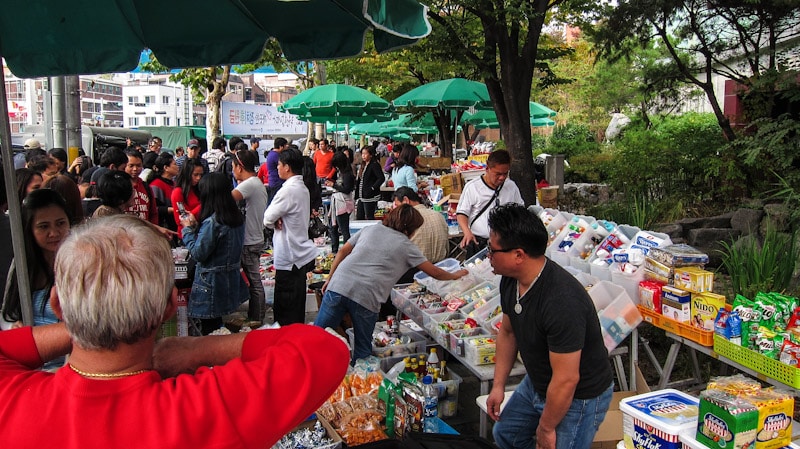
Daehangno Philippine Market is a unique Sunday street market in Hyehwa-dong that sells groceries, food, snacks, and other products from the Philippines. If you are looking for hard to find products of the Philippines, then this is your one stop spot in all of Seoul. There is nothing else like it in the city.
Last Updated on Mar 14, 2025